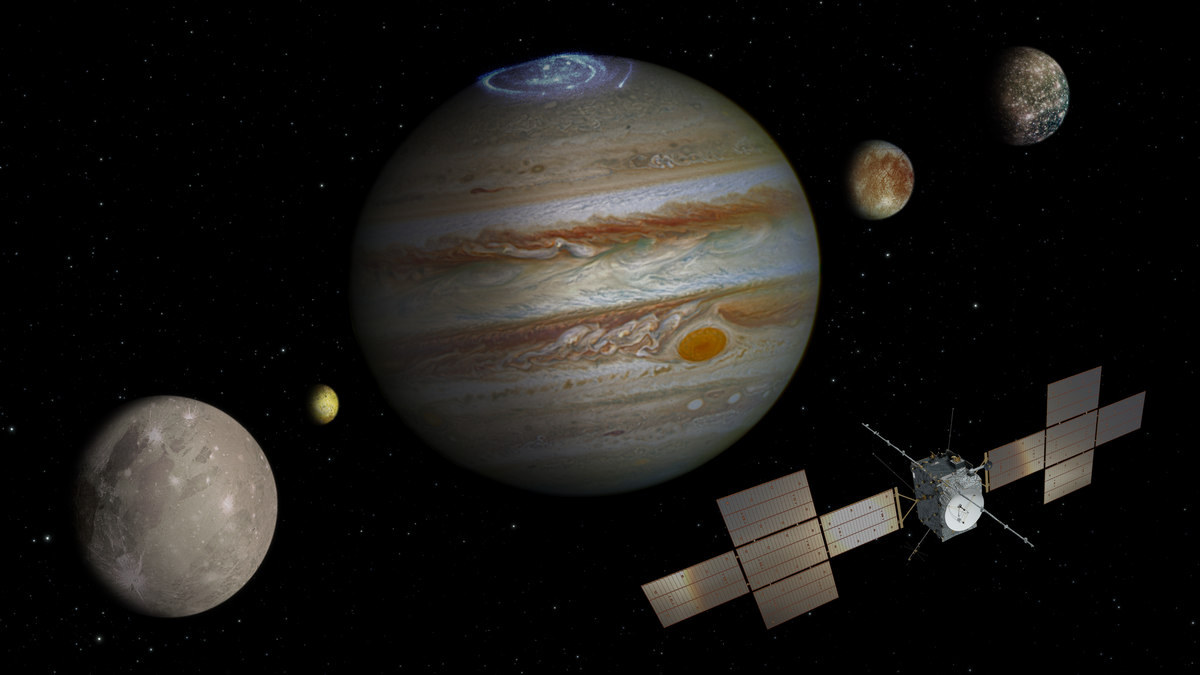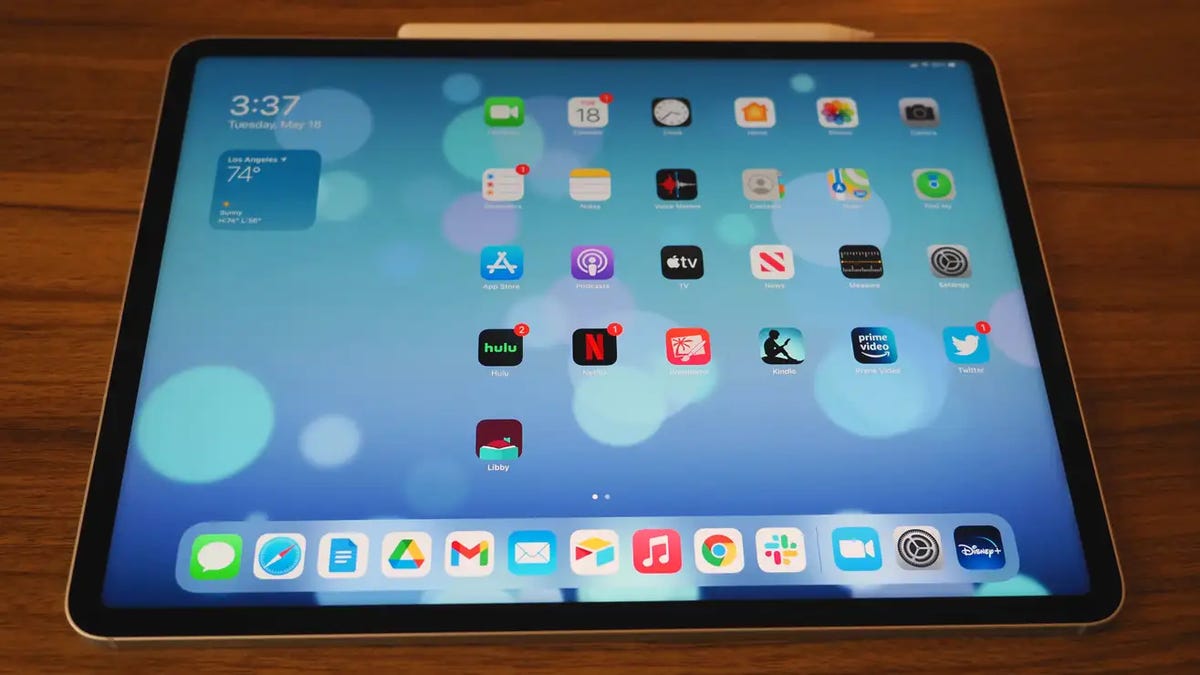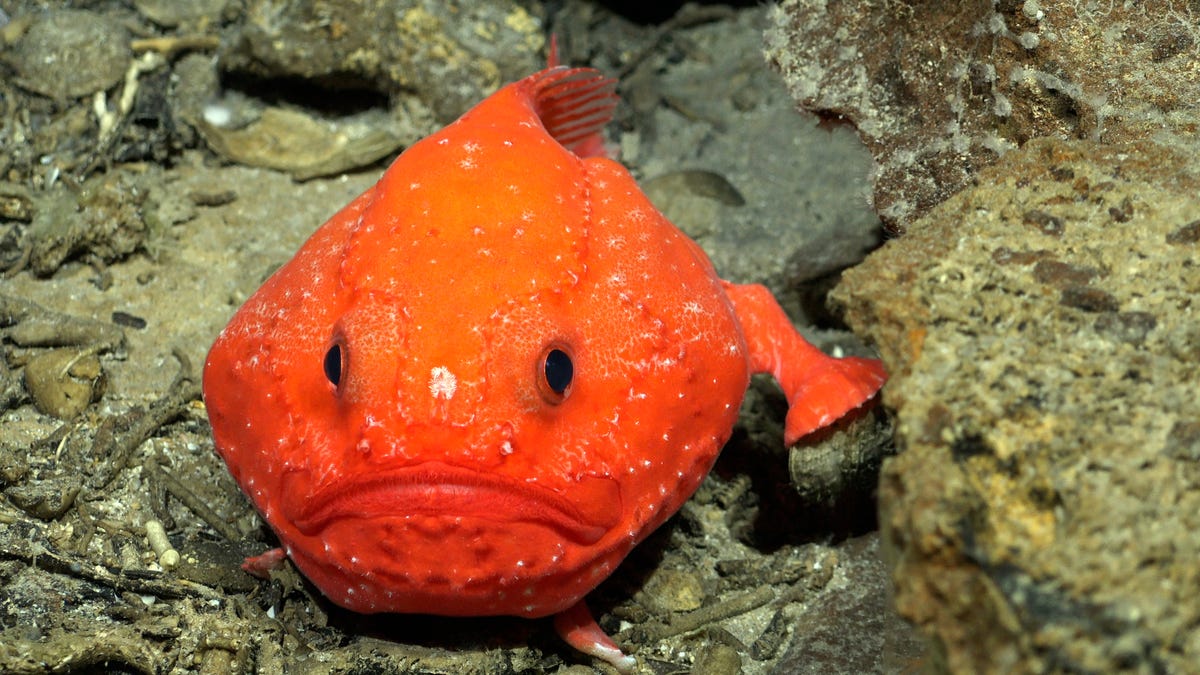Watch Live as ESA’s JUICE Spacecraft Launches to Jupiter

A highly-anticipated mission to Jupiter and its intriguing moons is gearing up for liftoff, ready to begin an eight-year journey through the solar system to reach icy worlds that may host some form of life.
Update: April 13, 8:11 a.m. ET: Today’s launch has been scrubbed due to the threat of lightning. ESA and Arianespace will try again tomorrow, April 14, at 8:14 a.m. ET.
Original post:
The European Space Agency’s (ESA) JUICE mission, or JUpiter ICy moons Explorer, is scheduled for launch at 8:15 a.m. ET on Thursday from Europe’s Spaceport in French Guiana. The spacecraft is packed atop Europe’s Ariane 5 rocket, which will attempt to launch JUICE on a trip to Jupiter.
You can watch the launch live through ESA Web TV or the space agency’s YouTube stream, or by tuning in to the feed below. The live stream is scheduled to begin at 7:45 a.m. ET, with a post launch briefing scheduled for 8:30 a.m. ET.
JUICE is equipped with two cameras that will capture the first moments of the mission, snapping images of the spacecraft’s solar array deployment after launch. ESA will make the images available should they turn out to be “suitable,” the space agency wrote. When unfurled, the solar panels will span across 915 square feet (85 square meters) in size, making it the largest array to ever be deployed for an interplanetary mission, according to ESA.
Following its launch, JUICE will spend about two and a half weeks deploying its antennas and instrument booms, followed by three months of commissioning for its scientific instrument, according to ESA. The spacecraft is set to make its first of four gravity assist maneuvers in August 2024, using the Earth-Moon system to propel it on its trajectory.
It’s going to take JUICE eight years to get to Jupiter. The spacecraft is expected to arrive at the gas giant system in 2031, where it will focus on studying three of Jupiter’s many moons: Europa, Ganymede, and Callisto. The reason why those three were selected out of Jupiter’s approximately 90 moons is because they may host subsurface oceans beneath their icy surfaces and scientists are curious about their ability to host primitive life. JUICE will also spend nine months orbiting Ganymede, making it the first time any moon beyond our own has been orbited by a spacecraft.
The JUICE mission is set to last about three years, during which the spacecraft will perform 35 Jovian moon flybys. During its time exploring the Jupiter system, JUICE is expected to make unprecedented observations of the gas giant and its icy moons that will likely revolutionize our understanding of habitability on other worlds.
For more spaceflight in your life, follow us on Twitter and bookmark Gizmodo’s dedicated Spaceflight page.
Source link





